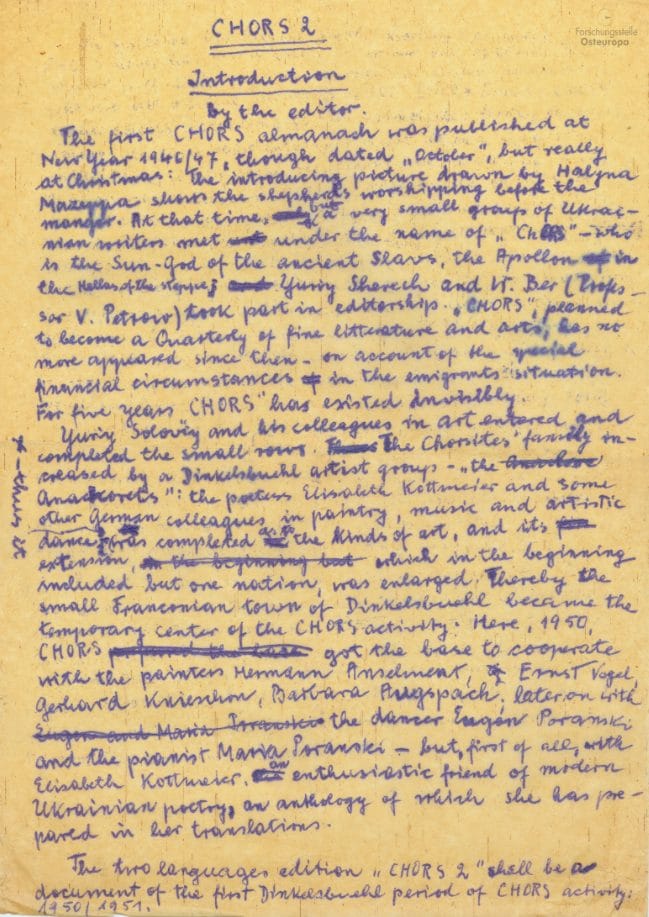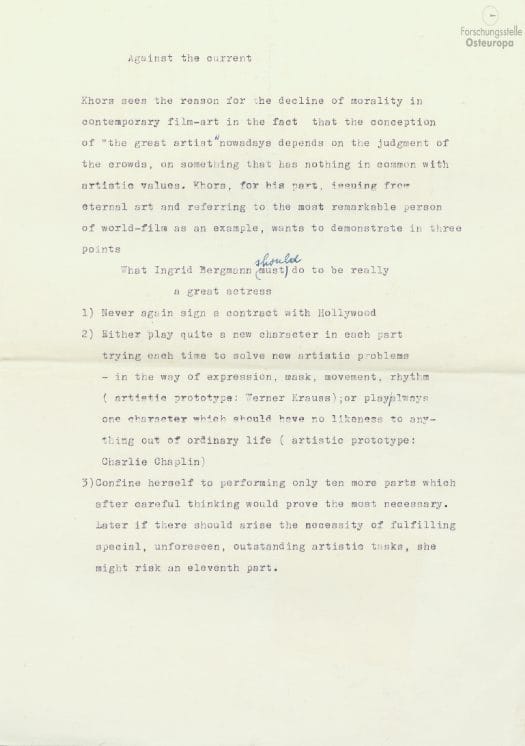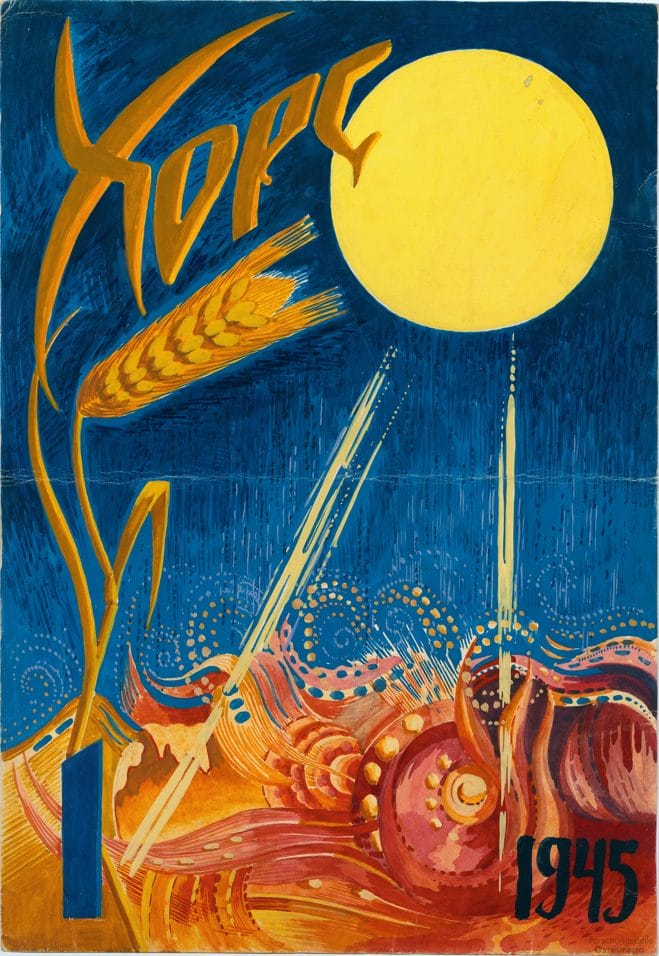Related sources:

Testimonies of Ihor Kostetskyi’s Fate under Nazi Rule
Ihor Kostetskyi was just one example of several several million individuals who were taken by the Nazi Army from occupied eastern European territories and had to work as Ostarbeiter in the German war industry. Before the war, Kostetskyi was involved in several cultural, artistic, and creative projects and initiatives. Born in Kyiv, he made little declaration of his Ukrainianness until Carpathian Ukraine started to seek independence in 1938. When he was mobilized into the Red Army at the start of the German invasion in 1941, he was in the process of changing his real name, Ivan Merzliakov, to the pen name, Ihor Kostetskyi. This is the name he would use in the future....

Testimonies on the Material Situation of the Culturally Active Ukrainian Emigration in Germany, 1946-1951
The Ukrainian DP journal KHORS was initially planned to be quarterly. However, the first KHORS edition in 1946 was also the last. The following documents provide insight into the reasons for the failure to publish subsequent issues and interesting evidence about the financial situation of the Ukrainian diaspora in the American occupation zone in general. The second and third issues of KHORS were planned to be published shortly after the first. A handwritten list of the planned content for these two issues confirms this thesis. It was written in an old document form of the German Air Force from the Second World War. These forms were distributed to the residents of the DP...

Principles and Future Aims of the DP Journal KHORS, 1946-1951
The Ukrainian DP journal KHORS focused on culture, arts, and cinema. It was published by a small team around the writer Ihor Kostetskyi. In its statutes, KHORS was not only displayed as a journal. Instead, it would be somewhat of a worldwide movement that people could join or leave, as they wish, in the future. The overriding principle was to accept the “primacy of the artistic form,” art for art’s sake. Every artist who shared these postulates was allowed to belong to KHORS “regardless of race, nationality, confessional or political convictions.” Only one group was excluded, the communists because “their ideology does not acknowledge the primacy of form.” Kostetskyi dreamed that in the...

Reviews of Film Art as an Instrument of Independence by the Ukrainian DP Journal KHORS, 1946-1951
The Ukrainian DP journal KHORS was planned as a quarterly about art and culture. It was published by a group of editors headed by writer Ihor Kostetskyi. Although the second issue was never published, the editorial notes and pre-written articles ready for publication in the planned second issue speak a lot about the potential inherent in the project. In its statute, KHORS resolutely distanced itself from communism and the Soviet Union. The reason for this position, among other things, was the Soviet ideologization of art. For Ukrainian DPs in the Western occupation zones of postwar Germany, such criticism was not only commonplace but almost expected. However, KHORS went one step further. One of...

Title Pages of Never Published Editions of the DP Journal KHORS, 1945-1951
The idea of the Ukrainian DP-creation KHORS as a movement and a journal was kept alive for many years, even though the journal’s publication, initially planned as a quarterly, could never be realized beyond a first edition in 1946. The title pages listed here were never published, but they can provide interesting insights into the senses put into KHORS by its creators, its design, and the materials used. In 1945, immediately after the war, Ukrainian artist Halyna Mazepa drew the first cover with simple paint on a piece of cardboard. Its design was intended to reveal the idea of the future edition. The journal’s title is written in wheat, an important symbol in...

